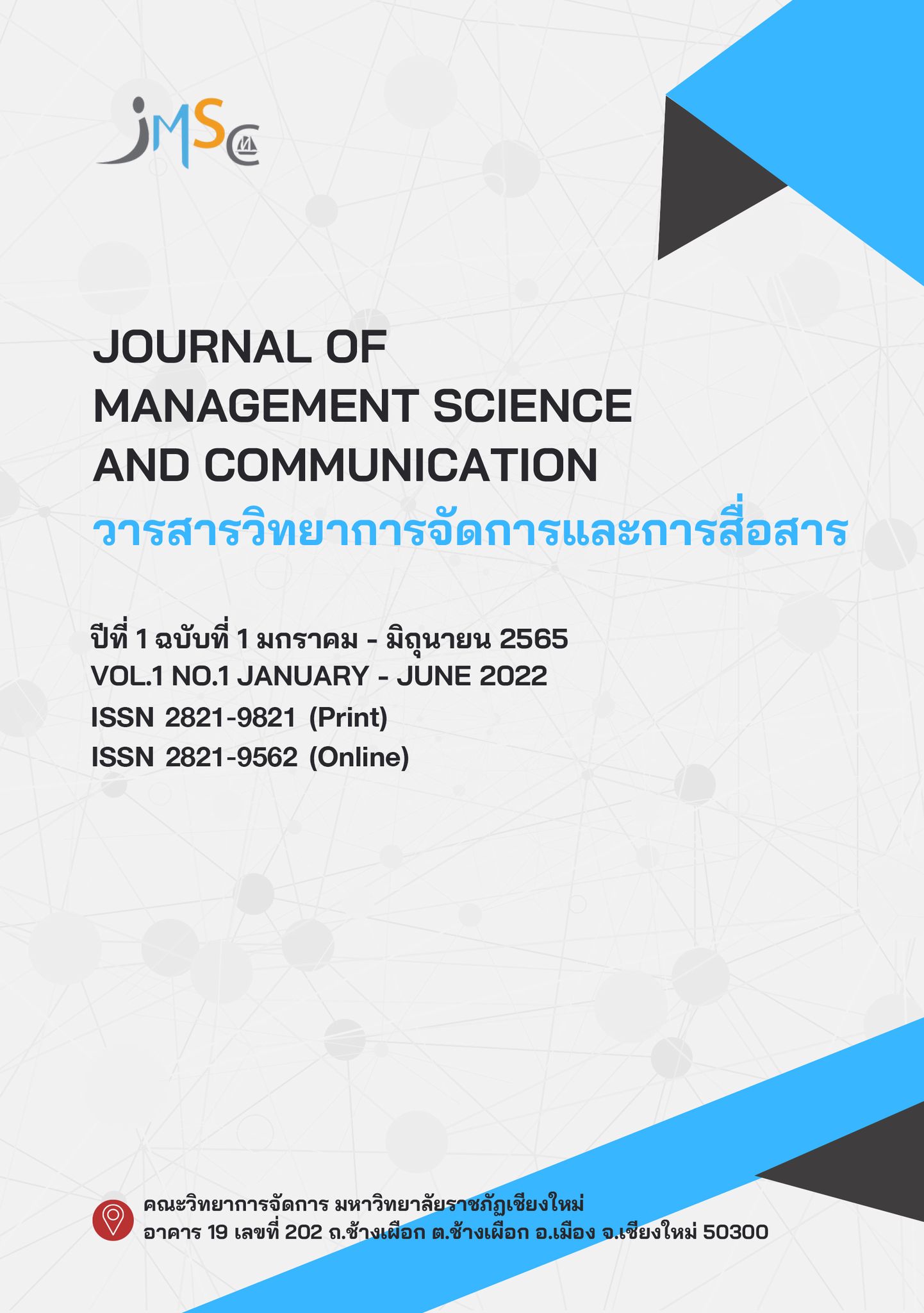Community Participation for developing the potential in occupation
Main Article Content
Abstract
Community Participation for developing the potential in occupation is the qualitative research. The participant observation and the in-depth interviews methodology were designed to collect field data with a total number of 57 respondents. The results of the research were presented in 4 themes: 1) the assessment of the potential of a community to lead oneself to the goal of developing the occupation potential 2) the change outcome of the target group 3) the change in the target group and their participation in activities under the program and activities of the community enterprise 4) the social impact and its utilization. The research results showed that after the potential development project was run, the target audience has changed in terms of skills and ability to the marketing communication in higher. They were changed from the passive audience to the active audience who could show the participation, the reflection, the self-acceptance, and the rejection action. There has been a change in participation in activities under the program at different levels. The participation in basketry craft development activities remained at the level of “Marginal Participation” which was different from the marketing communication activities and the skill development activities in cost accounting were at the level of “Partial Participation”. It was found that the activities that the target group participated in at the “Full Participation” level were activities related to the benefits management including setting the selling price allocating marketing expenses (which has never been), the acceptance and refusing feedback to improve the innovation of Klum-semi-automatic sharpeners.
Downloads
Article Details

This work is licensed under a Creative Commons Attribution-NonCommercial-NoDerivatives 4.0 International License.
References
กาญจนา แก้วเทพ. (2548). ก้าวต่อไปของการสื่อสารเพื่อการพัฒนาชุมชน. สำนักงานกองทุนสนับสนุนการวิจัย.
กองทุนเพื่อความเสมอภาคทางการศึกษา (2563). วิสาหกิจชุมชนกลุ่มผลิตภัณฑ์จักสานคลุ้มบ้านทุ่งใน โครงการพัฒนาศักยภาพในการประกอบอาชีพจักสานคลุ้มของวิสาหกิจชุมชนกลุ่มผลิตภัณฑ์จักสานคลุ้มบ้านทุ่งใน. สืบค้นเมื่อวันที่ 19 มิถุนายน 2565, จาก https://www.eef.or.th/community-product/product-17/.
จินตวีร์ เกษมศุข. (2561). แนวคิดการมีส่วนร่วมของประชาชนเพื่อการพัฒนาชุมชนที่ยั่งยืน. วารสารวิชาการมนุษยศาสตร์และสังคมศาสตร์, 26(50), 169 - 186.
เจริญเนตร แสงดวงแข. (2563). ผลลัพธ์การสร้างนักสื่อสารชุมชนท้องถิ่นเพื่อเสริมสร้างจิตสำนึกด้านการอนุรักษ์ทรัพยากรป่าชายเลน ตำบลหัวเขา อำเภอสิงหนคร จังหวัดสงขลา. วารสารศาสตร์, 13(3), 40 - 83.
ไปรมา อิศรเสนา ณ อยุธยา. (2561). Design thinking: learning by doing. กรุงเทพฯ: ศูนย์สร้างสรรค์งานออกแบบ. สืบค้นเมื่อ 19 มิถุนายน 2565, จาก http://resource.tcdc.or.th/ebook/Design.Thingking. Learning.by.Doing.pdf.
Fornaroff, A. (1980). Community Involvement in Health System for Primary Health Care. Geneva: World Health Organization.
Kasim, K. A. (2007). Developing a Framework for identifying necessary skills needs for community engagement in the housing market renewal process. Retrieved November 10, 2021, from researchgate.netstandford D. school. (2021). Design Thinking Model.


